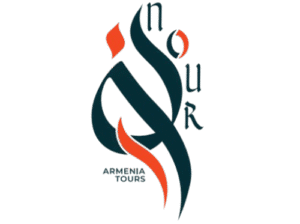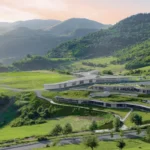If you’ve ever stumbled upon a video or story about Vardavar, you might have seen people drenched from head to toe, laughing and splashing water on each other in the middle of the summer heat. At first glance, it looks like a giant, playful water fight — and it is! But Vardavar is much more than just fun and games. It’s a rich, centuries-old tradition that connects Armenians to their ancient roots, their faith, and their sense of community. Let’s dive into what makes Vardavar so special, from its origins to how it’s celebrated today.


Ancient Beginnings: Honoring the Goddess of Water and Love
Vardavar’s story starts long before Christianity reached Armenia, in a time when people worshipped nature and its forces. The festival was originally dedicated to Astghik, the Armenian goddess of water, beauty, love, and fertility. In fact, the name Vardavar comes from the Armenian word vard, meaning “rose.” Roses were a key part of the celebration — people would gather and offer bouquets to Astghik as a sign of love and gratitude.
But why water? In ancient Armenia, water was sacred. It was the source of life, the element that made crops grow, and a purifier of both body and spirit. During Vardavar, people sprinkled water on each other and on the earth to bless the fields, protect their homes, and wash away any evil or misfortune. It was a joyful way to thank the goddess for the bounty of nature and to prepare for the coming seasons.
Imagine a community coming together after a hard season of work, celebrating with flowers, songs, and water — a vivid symbol of renewal and hope.




The Christian Twist: From Pagan Ritual to Spiritual Celebration
When Armenia became the first nation to adopt Christianity as its official religion in 301 AD, many pagan traditions were adapted rather than erased. Vardavar was one of those traditions that found a new home within the Christian calendar.
The Armenian Apostolic Church linked Vardavar to the Feast of the Transfiguration of Jesus Christ, celebrated 98 days after Easter. This connection gave the festival a fresh spiritual meaning. The water splashing transformed from a pagan rite into a symbol of spiritual cleansing, renewal, and transformation — much like the biblical story of Jesus’ transfiguration on Mount Tabor, where he revealed his divine glory.
There’s also a beautiful legend tied to Noah’s Ark. After the flood, Noah’s sons reportedly poured water on each other to remember the cleansing power of the flood and the new beginning it brought to the world. This story adds another layer of meaning to the water-splashing tradition — it’s not just fun, it’s a reminder of rebirth and hope.
What Does Vardavar Look Like Today?
Fast forward to the present, and Vardavar is one of the most eagerly awaited and widely celebrated holidays in Armenia. It usually falls in July, during the warm summer months — perfect for a water fight!
The most iconic part of Vardavar is the massive, city-wide water splash. People of all ages take to the streets armed with buckets, water guns, balloons, and hoses, drenching friends, family, neighbors, and even strangers. It’s a day when social barriers melt away, replaced by laughter, fun, and a shared sense of joy.
But Vardavar isn’t just about the water fight. In rural areas, the festival retains many of its traditional customs. Farmers bring ears of corn to church to pray for protection against hail and pests. Girls pick wildflowers and weave them into bouquets, a nod to the festival’s ancient ties to fertility and nature. These customs remind everyone of the festival’s deeper meaning — gratitude for nature’s gifts and hopes for a prosperous future.
In Yerevan and other cities, the municipality often joins in the fun by cleaning statues and public monuments with water jets, adding to the festive atmosphere. Special sprinkling trucks roam parks and streets, encouraging everyone to join the celebration.
One important modern development is the growing emphasis on respect and consent. While water fights are wild and playful, there’s a shared understanding that no one should be drenched against their will. This respect makes the festival inclusive and enjoyable for everyone.


Vardavar Beyond Armenia: A Global Celebration
Armenians around the world cherish Vardavar as a vital link to their homeland and heritage. Diaspora communities in countries like Russia, the United States, and France celebrate Vardavar with their own water fights, cultural events, and gatherings. These celebrations help keep Armenian identity alive and vibrant, no matter where people live.
In recent years, the Vardavar International Festival has gained popularity. Held at historic sites such as the Geghard Monastery and the pagan temple of Garni, this festival offers a chance to experience Armenian music, dance, crafts, and folklore alongside the traditional water splashing. It’s a beautiful way to connect modern Armenians and visitors with the country’s rich cultural tapestry.
Why Vardavar Matters: More Than Just Water
At its heart, Vardavar is about connection — to nature, to history, to faith, and to each other. It’s a celebration of life’s cycles, of renewal, and of community spirit. The water splashing, while playful, carries deep symbolism: cleansing, blessing, and the joy of living.
In a world that often feels divided and busy, Vardavar invites people to pause, laugh, and come together. It’s a reminder that traditions can evolve but still hold onto the essence of what makes a culture unique and meaningful.
A Quick Look: Vardavar Through the Ages
| Era | Main Focus | Meaning of Water | Key Traditions |
|---|---|---|---|
| Ancient Pagan Times | Honoring Astghik, goddess of water | Life, fertility, purification | Offering roses, sprinkling water |
| Early Christian Era | Feast of the Transfiguration | Spiritual cleansing and transformation | Water splashing as a symbol of faith |
| Modern Day | Community celebration and fun | Joy, renewal, cultural pride | Water fights, flower bouquets, prayers |
How You Can Experience Vardavar
If you ever get the chance to visit Armenia in July, experiencing Vardavar firsthand is unforgettable. Join the locals in the streets, don’t be shy about getting wet, and soak up the festive atmosphere. Beyond the water fights, explore the cultural events, try traditional Armenian food, and learn about the history behind the celebration.
If you’re not in Armenia, look for Armenian community centers or cultural festivals near you. Many host Vardavar events that bring a piece of Armenian tradition to the diaspora.
Vardavar is a perfect example of how ancient traditions can live on, adapt, and bring joy in the modern world. It’s a festival that invites everyone to celebrate life — with a splash of history, a sprinkle of faith, and buckets of fun.


















